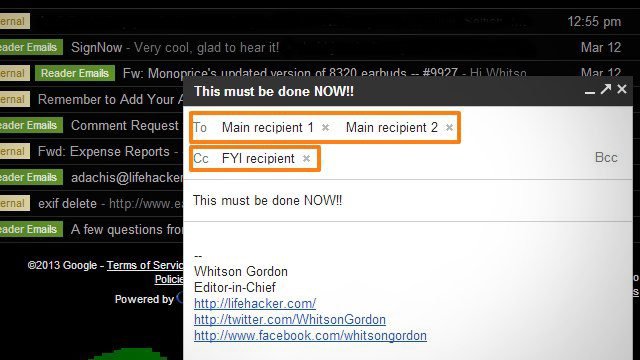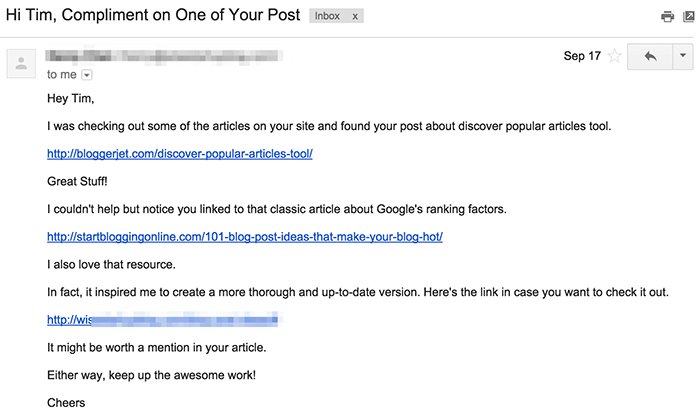Email has been around for a long time, and by 2019, over a third of the worldwide population will be using email. Sadly, even with such wide popularity, not many people are familiar with general email etiquettes.
No, I’m not talking about things such as ‘don’t write in CAPITALS’ or proofreading your language. They are merely basic rules. If you are working in a professional environment, that will not be enough.
There is a lot at stake here; your actions could break a deal or it could result in a PR nightmare (in this age of ‘going viral’, such incidents can do irreparable damage to your organization’s reputation).
Here is a list of etiquette oversights that need to be avoided to ensure that your email impresses the reader.
1. Misinterpreting ‘CC’ and ‘To’ fields
Normally, we just add one recipient of the email in the ‘To’ field, and everyone else in CC/Bcc field even when we expect a reply from more than one person.
But, is it the right approach?
The answer is – NO.
If you are expecting a reply from someone, you need to add them as well to the ‘To’ field.
Additionally, if you just want to keep someone in the loop – that’s only when you need to use CC/Bcc field.

2. Using generic phrases in subject line
Most email experts advise users to keep the subject line short. But, that doesn’t mean we should rely on generic phrases like ‘Deadline approaching’, or ‘Stay connected’, or ‘It’s been awhile since we talked’.
In an age when we are all so strapped for time and used to text messages, I like to view my subject lines as a text message,” ~ Lisa Marie Dias (Social Media and Email Marketing strategist and trainer)
Instead of using generic phrases, ensure that your subject line is clear and specific. It should provide a one-line summary of what the email is about. It should make it clear for the reader as to what to expect from the email.
Quick-tip: Ensure that the subject line contains some important keywords, this makes it easier to find while searching in the future.
3. Asking for a ‘Read receipt’
This is perhaps one of the most annoying features of email. Asking for a ‘read receipt’ often comes across as unprofessional and rude. It may also show that there is a lack of trust from your side.
I always decline sending a read receipt back to the sender because – Really? You don’t need to know when I read your email. You’ll be the first to know when I reply. ~ Jessica Lawlor
Instead of asking for a read receipt, it’s always better to send a follow-up email after allowing a reasonable gap for the recipient to reply. One week’s time would be ideal unless the matter requires urgent attention.
If you still feel like tracking recipient behaviour, you can always use the email tracker from Hiver which does the job neatly, without annoying the recipient.
4. Sending an attachment that requires a specific application to open
Most of us have received such attachments at least once – a file format that you had no idea of, and had to Google to find out how to open it. The sender may have their own reasons or maybe they just wanted to show off their tech skills.
The point you need to remember is – an attachment is meant to be read/seen/used. If you send it in a format which is not widely used or cannot be easily opened, it defeats its purpose.
Ensure that your attachment is in a format that is used universally like – pdf, jpg, mp3, avi, .rtf.

5. Attaching files without mentioning them in the email
If your email body doesn’t mention anything about the attachment, there is a high chance of it getting ignored or not seen. The reader may go through the body and click ‘back’.
With 53% of all emails being opened on mobile devices, this point only becomes more relevant. The screens are smaller, people are more impatient than ever – they may not swipe down to see the attachment unless you have mentioned it.
6. Sending a document without granting access to view
If the file you are attaching is password protected or requires for you to grant access, ensure that you have already done the needful before sending it. It will save both yours and the readers time.
Such instances could also make the sender come across as a careless person, and that’s definitely not good for your business or professional life.

Source
7. Using the same subject line from a previous conversation
We are all familiar with email conversations that turned into never ending threads. After the first few exchanges itself, the topic would have changed, however, we rarely bother to change the subject line. This often leads to confusion, and we end up uttering our go-to-line – ‘my inbox is a mess’.
The subject line is supposed to capture the essence of the email; with the changing topic, it needs to be changed as well. It will give more clarity to everyone involved.
If you are working in customer support or sales, you may have come across instances where you had to go back to an old thread to make a new conversation. Again, altering the subject line will help you give a better picture without having to sacrifice your proof of acquaintance.
Check these links to find out how to do it in Gmail and Outlook.
8. Talking like a bot
Common opening lines:
- Trust you’re doing well
- I hope you’ve had a good day
- How are you?
Get over this. Even robots use the same salutations.
You can do a lot more than that. For example, if the recipient is the founder a startup that recently hit 100K users – congratulate them on their achievement. Wishing your recipients on special occasions is definitely a good way to establish a personal connection with them.
9. Adding complete URLs in email body
Doing this will make the sender look like a lazy person. On top of that, it will make your email more susceptible to Phishing filters. As a result, your email could end up in the spam folder and not the inbox.
The solution is simple – hyperlinking your URLs with relevant text. Check out these two Outreach emails, and see how hyperlinking makes your email look less spammy and more attractive.
For instance, the email below looks downright ugly!

10. Attaching unrelated files
Some of us lack the patience to discover the exact file to be sent, so we just attach the entire collection and let the recipient waste his time and to find the exact file. This creates absolute confusion, and the recipient may hate you for this.
Always attach only the file that needs to be shared, even if it takes time. This will ensure that recipient will be able to go back to what they were doing.
If the attachment is of a larger size, you could try compressing them into a zip file or you could also upload the file in Google Drive or Onedrive and share the link with the recipient.
Conclusion
By following these rules, you will be able to show yourself in best possible light and look professional at the same time.
Most of them are simple; if you spare a little more time and effort in following these etiquettes – your emails will surely yield better results. As they say – success comes to those who put in that extra effort.
Featured image copyright.


































